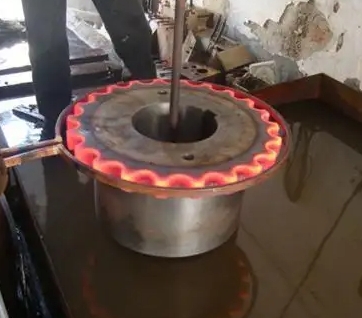- 02
- Apr
Quenching cooling cracking phenomenon of high frequency quenching
Quenching cooling cracking phenomenon of उच्च आवृत्ति शमन
Quenching and cooling cracking refers to the phenomenon that cracks are formed on the workpiece when the stress during quenching and cooling exceeds the breaking strength of the material at this temperature. Generally below 200 °C, due to the martensitic transformation, a large transformation stress is generated, and at the same time, the plasticity of the steel is poor at this temperature, and cracks are prone to occur. Quenching cracks can occur during cooling, when the part is just taken out of the medium, or when it is stored for a certain period of time.
The main types of quenching cracks are: longitudinal cracks caused by the tangential residual stress being larger than the longitudinal direction of the slender cylindrical parts after quenching; The stress is much greater than the transverse crack caused by the tangential stress; tubular parts or parts with holes often form cracks on the inner wall of the hole due to the difference in the cooling rate between the inner wall of the hole and other parts.

